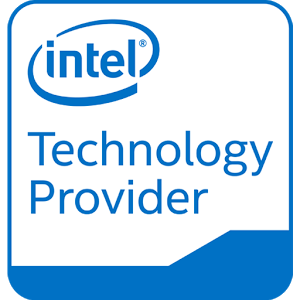When is the right time to upgrade your computer fleet?
The norm of replacing a computer fleet is 3 to 4 years, yet getting trapped in this cycle may not be beneficial to your organization. There is a key concept you have to consider before upgrading, and you don’t have to break the bank to do it. When following these simple rules of upgrading; your organization will be able to save money when possible, and also keep the productivity with a higher outcome of benefits. At the same time getting out of this monotonous cycle.
Before we get to the concept let us talk about the benefits of upgrading your computer fleet. The most obvious benefit is new hardware. Everything breaks down over time and having a new unused hardware provides a sense of security. At the same time the new hardware provides better performance, and the productivity of the user accelerates. This is due to the fact that there is less waiting time for applications to load. Also the computer can better multitask with new and more demanding applications. The compatibility with newer software and hardware is also higher with an upgraded computer fleet.
Every coin has two sides, and any owner or IT administrator knows that upgrading your fleet comes with burdens. Such burdens may include; money for the upgrade, deployment of hardware and prolonged transition. Following a simple concept can make these burdens less stressful and to minimize their impact.
The Concept
Being prepared for an upgrade is very crucial, in order not to be caught off guard when your fleet starts breaking down or it starts to reduce productivity. In order to prepare for an upgrade you will have to create a plan. Keeping in mind that upgrading your fleet doesn’t mean the exchange all of your computers, which of course as IT professionals would like all the machines to be the same and state of the art, but this is not always the capable answer. In this plan you should include a budget for the upgrade, as well as which set of computers, if not all, should be replaced in what order.
The Plan
You should prepare for an upgrade ahead of time with a flexible plan. When creating your plan you want to ask yourself or your team:
What are the computers used for?
To answer the question above, you should generate a detailed chart of different tasks that a set of computers preform. For example, I have 5 computers that are used for payroll and billing, as well as 5 computers that are used for game design. Grouping your computers by tasks will help you decide the order of replacement. Another good grouping technique is importance of use; which an example of importance would be if you have 3 estimators that travel to the client’s project locations, they are responsible for producing an estimate within 48 hours. In this example the estimators would be in higher need of the latest technology then a secretary in the office due to time restraints.
Will my new software work on my old fleet?
A business needs to stay focused in order to provide the best customer service, as well as stay ahead of the competition. The use of new software is one of many tools used to boost the performance of a company, but as many know new software can be demanding. Especially when better hardware is always being developed to accommodate the performance needed. The answer to this question may be the deciding factor to your upgrade.
How many new computers do I need?
As mentioned previously, it would be nice to replace the whole fleet, but it's not always possible. So you use the chart you created in order to decide which computers should be replaced, and at what time the replacement should take place. Again we have to ask ourselves; which computers are the most important and will the new software work on the old computers? The need of new software may be the key to show which computers need replacing first.
Will not upgrading cause unexpected expanses?
Putting aside the fact that a computer may crash at any time, not keeping up with newer software may cause productivity to drop and unexpected security breaches. A good example would be a work station running on windows XP; the beloved by many operating system is no longer supported by Microsoft. This means that there is no more security updates, which leaves your organization unprotected. Even if you only have one computer running on XP, you are still endangering your network. A network is only as strong as its weakest link. Security breaches can be more expensive than an upgrade, causing not only embarrassment to your company, but also financial hardships.
Can I fix it?
Another thing to consider in your plan is can you fix it? Sometimes just adding an extra RAM can bust the performance of your work station. Same thing goes for repairing a broken part or upgrading parts of your computer. When answering the question you have to keep in mind; if the computer is older than 3 or 4 years upgrading hardware will less likely provide you with the needed performance.
Guidelines:
- 1. Create a detailed and flexible plan.
- a. What are the computers used for?
- b. How many computers are crucial to my organization?
- c. What will be my deployment process and do I outsource it
- d. How would my software upgrade impact my fleet?
- 2. Create a flexible budget and set aside funds for upgrading.
- 3. Be flexible
- 4. Ask yourself; will upgrading my technology now benefit my company?
- 5. Should I wait a month or two for the newest hardware? How would the wait benefit my company? Will it cost more?
- 6. Lastly, will my security be strengthened with an upgrade? Can I afford to wait!
Even though the norm is upgrading a computer fleet every 3 to 4 years, it may be beneficial to your company to upgrade early. Being flexible and prepared will help you stay ahead of your competition, as well as boost your productivity. So remember when faced with the question of upgrading follow the above mentioned rules to help you in your decision making.






